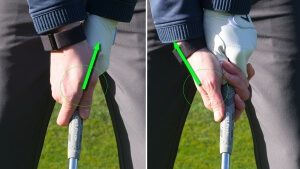Introduction
The hip turn is a crucial element of a powerful and consistent golf swing. Properly executed, it can significantly improve your ball-striking ability and overall performance on the golf course. In this blog post, we will delve into the importance of the hip turn, the mechanics involved, and provide step-by-step instructions with examples to help you develop a more effective golf swing.
Why is the Hip Turn Essential in the Golf Swing?
The hip turn is a fundamental component of the golf swing as it generates torque and power, enabling you to create maximum clubhead speed and achieve longer accurate shots. Additionally, an efficient hip turn promotes better weight transfer and helps you maintain balance throughout your swing, resulting in improved consistency and accuracy.
Key Mechanics of the Hip Turn
1. Setup
Start by addressing the ball with a shoulder-width stance and your feet slightly flared outward. Ensure that your knees are slightly flexed and your spine is in a neutral position.
2. Backswing
During the backswing, initiate the hip turn by rotating your lead hip (left hip for right-handed golfers, right hip for left-handed golfers) away from the target. Keep your back straight and your weight evenly distributed between your feet.
3. Coiling
As you continue the backswing, allow your upper body to rotate while maintaining the angle of your spine. This coiling action stores potential energy that will be released during the downswing.
4. Downswing
The downswing begins with the hip turn, which plays a critical role in initiating the sequence of movements leading to impact. Start the downswing by rotating your hips towards the target, transferring your weight onto your front foot.
5. Impact
At impact, your hips should be slightly open, allowing your hands to lead the clubhead into the ball, creating a powerful and square strike.
6. Follow-through
As you complete the swing, your hips should continue rotating toward the target, and your weight should transfer to your lead foot. Your back foot will naturally rise off the ground as you finish the swing.
Step-by-step Guide to Mastering the Hip Turn
Step 1: Warm-up
Before starting any golf practice or play, warm up your body with dynamic stretches to improve flexibility and promote fluid hip movement.
Step 2: Balance and Stability
Stability is crucial for an effective hip turn. Practice balance exercises, such as standing on one foot for a few seconds, to develop a solid foundation.
Step 3: Slow-motion Swings
Perform slow-motion swings focusing on the hip turn. Pay attention to your posture, and ensure that your hips are rotating smoothly and consistently throughout the swing.
Step 4: Weight Shift Drills
Practice weight shift drills to reinforce the transfer of weight from your back foot to your front foot during the downswing.
Step 5: Video Analysis
Record your swing from different angles and analyze it to identify any flaws or areas for improvement in your hip turn. Compare your swing to professional golfers to get a visual reference.
Step 6: Incorporate in Full Swing
Gradually integrate the proper hip turn into your full swing. Start with shorter clubs and work your way up to longer clubs, maintaining focus on maintaining a smooth and controlled hip turn throughout.
Examples of Golfers with Excellent Hip Turn
1. Rory McIlroy
Rory McIlroy is renowned for his powerful and fluid hip turn. Watch his swing in slow motion and observe how he uses his hips to generate tremendous clubhead speed while maintaining exceptional balance.
2. Annika Sörenstam
A legendary golfer, Annika Sörenstam, had a picture-perfect hip turn that contributed to her remarkable consistency and dominance in women’s golf.
Conclusion
In conclusion, mastering the hip turn is a pivotal aspect of developing a successful golf swing. By understanding the mechanics involved and incorporating the step-by-step guide into your practice routine, you can enhance your performance and enjoy greater success on the golf course. Remember that consistency and patience are essential to honing this skill, so continue to practice diligently and seek professional advice if needed.











